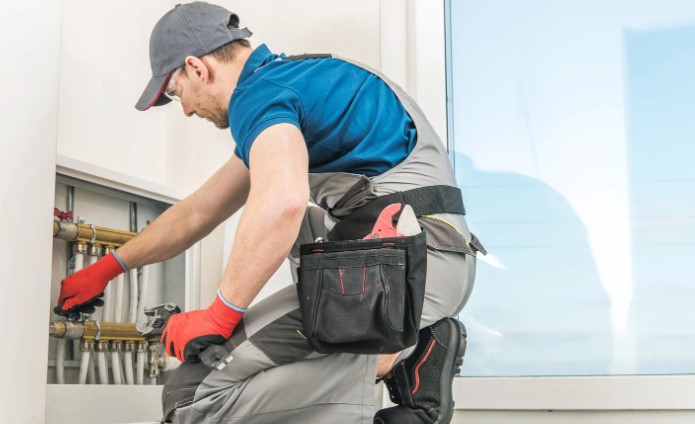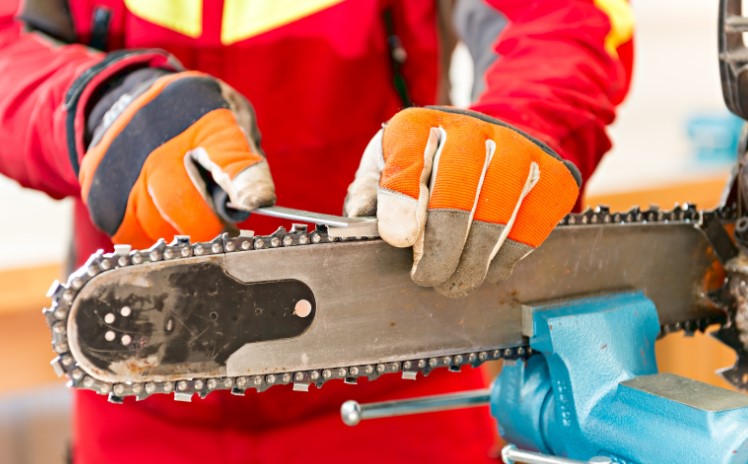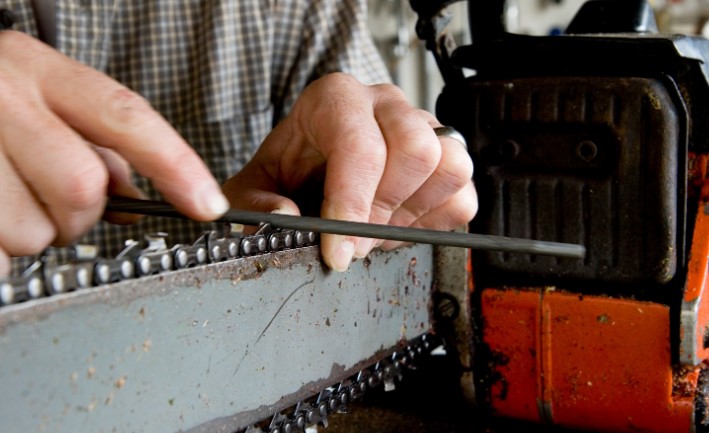
by Kanimozhi BV | Jul 9, 2025 | Garden, Exterior
Dandelions may look innocent with their cheerful yellow flowers, but once they invade your lawn, they quickly turn from pretty to pesky.
I know this firsthand—no matter how often I pulled them up, they kept coming back stronger.
That’s when I realised I needed a step-by-step plan to not just remove them but to keep them from returning for good.
In this guide on how to get rid of dandelions, I’ll walk you through how I successfully dealt with dandelions, using both natural and chemical methods, and how I keep my lawn healthy and weed-free throughout the year.
Why Are Dandelions So Hard to Get Rid Of?
When I first started my garden maintenance journey, I underestimated dandelions. They seemed like simple lawn weeds that could be pulled out with ease.
I was wrong. What makes dandelions particularly stubborn is their biology—specifically, their taproot.
What makes dandelions a tough weed?
Dandelions are perennial weeds, which means they can live for several years. Once established, they spread by both seed and root.
The yellow flower turns into a puffball of seeds, easily carried by the wind. These seeds can sprout wherever they land, especially in weakened or bare patches of grass.
What is a dandelion taproot and why does it matter?
The taproot of a dandelion is a long, thick root that extends deep into the soil—sometimes as far as 10 inches.
If even a small piece of this root is left behind, the plant can regenerate. This is why cutting off the leaves or surface growth is ineffective—the root remains and regrows quickly.

When Is the Best Time to Remove Dandelions in the UK?
Timing your weed control can make all the difference. Over the years, I’ve learned that targeting dandelions at the right time in their life cycle dramatically improves results.
Seasonal timing for best results
The most effective periods for removal are early spring and autumn. In early spring, dandelions are just emerging and haven’t yet produced seeds.
In autumn, the plant is drawing nutrients back into the taproot to prepare for winter, making this a great time to apply treatments that kill the root.
Spring vs summer vs autumn weed control
| Season |
Effectiveness |
Reason |
| Spring |
High |
Young plants are easier to remove and haven’t seeded |
| Summer |
Moderate |
Plants may already have seeded and be harder to kill |
| Autumn |
High |
Ideal for systemic treatments that reach the root |
How To Get Rid of Dandelions Without Chemicals?
If you’re like me and prefer a safer, eco-friendly approach—especially around children and pets—there are several non-chemical methods that work well with consistent effort.
Digging them out: Step-by-step guide
Manual removal is one of the most effective methods if done properly. Here’s the process I follow:
- Water the area thoroughly. This softens the soil and makes the root easier to remove.
- Use a dandelion weeder, garden knife, or hand trowel to dig down beside the root.
- Loosen the soil and gently pull up the plant, trying to remove the entire taproot.
- If any root breaks off, repeat the process in a few days.
- Fill the hole with soil and overseed with grass to prevent future growth.
- Long-handled dandelion weeder
- Hori Hori garden knife
- Steel hand trowel
- Gardening gloves
- Watering can or hose
Homemade dandelion killers
I’ve tested several natural remedies over the years, and some can be surprisingly effective:
- White vinegar: Sprayed directly on the leaves during a sunny day. The acetic acid draws moisture from the plant and dries it out.
- Boiling water: Pour it slowly at the base of the plant. This method kills the surface leaves and can damage the root, though repeat treatments may be necessary.
- Salt: Use cautiously. Salt dehydrates the plant but can also ruin soil quality, so I only use it between paving stones or cracks, not on the lawn.
Mulching and soil health
Once I remove dandelions, I cover the soil with mulch or compost. This blocks sunlight and prevents any remaining seeds from sprouting.
I also make a habit of enriching the soil to support thick grass growth, which naturally crowds out weeds.

What Are the Best Chemical Options for Killing Dandelions?
Sometimes, especially when dealing with larger infestations, natural methods just aren’t enough. That’s when I turn to chemical solutions—but carefully and selectively.
Selective herbicides vs non-selective options
- Selective herbicides target only broadleaf weeds like dandelions and don’t harm grass. These are perfect for treating lawns.
- Non-selective herbicides kill all vegetation, so I use them only on patios, driveways, or areas with no desired plants.
Best dandelion killer products in the UK
After trying many brands over the years, these are the ones I trust most:
| Product Name |
Herbicide Type |
Pet-Friendly After Drying? |
Application Notes |
| Resolva Lawn Weedkiller |
Selective Spray |
No |
Easy to use, ideal for patch treatments |
| Weedol Lawn Weedkiller |
Concentrated Mix |
No |
Powerful formula, requires dilution |
| Neudorff WeedFree Plus |
Natural Option |
Yes |
Organic, based on natural acids |
Before applying any herbicide, I always read the label carefully and choose a dry, windless day to avoid harming nearby plants.

Can I Stop Dandelions from Coming Back?
Eliminating the current batch is only half the job. I’ve learned that consistent lawn care is the only way to prevent them from returning.
Long-term lawn care strategies
- Mow high: I keep my grass around 4 cm tall. Taller grass shades the soil, making it harder for dandelion seeds to germinate.
- Feed your lawn: A balanced lawn feed strengthens the grass and reduces bare spots. I feed mine in early spring and again in late summer.
- Water deeply, not frequently: This encourages deep grass roots, making the lawn more resilient.Aerate annually: Aerating the soil helps reduce compaction and improves water and nutrient absorption.
My dandelion prevention routine:
- Inspect lawn weekly for new weeds
- Remove new growth immediately
- Overseed thin or patchy areas in spring
- Apply autumn lawn feed and moss killer
- Avoid cutting the lawn too short
Is It Safe to Remove Dandelions Around Pets and Children?
One of the reasons I started using natural methods was the concern for my family’s safety. Whether it’s children playing barefoot on the grass or pets sniffing around, safety is crucial.
Comparing natural and chemical methods
While most natural remedies are safe once dry (like vinegar and boiling water), chemical herbicides can be harmful if ingested or touched while still wet.
Always wait the recommended time before allowing pets or kids back onto the treated area.
Pet-safe alternatives
For peace of mind, I prefer Neudorff WeedFree Plus, an organic product that is safe once dry and doesn’t leave behind harmful residues.
If I use any chemical weed killer, I keep pets and children away for at least 24–48 hours and rinse the area afterward.

Conclusion: Stay Consistent and Keep Your Lawn Dandelion-Free
Getting rid of dandelions takes patience, the right tools, and a bit of elbow grease.
Whether I’m using a manual weeder on a dewy morning or applying a targeted herbicide to a stubborn patch, I’ve learned that consistency is key.
The real secret? Don’t wait until your lawn is overrun. Tackle the problem early in the season, follow up regularly, and focus on growing a strong, healthy lawn that naturally fights off weeds.
With the right approach, you can take control of your lawn and enjoy a dandelion-free garden all year long.
Related Article: How to Get Rid of Mushrooms in Lawn?

by Kanimozhi BV | Jul 8, 2025 | Water Heater, Appliances
When I first switched to an electric boiler, one of my biggest questions was: how much is electric boiler cost per month? I wanted the warmth and efficiency without dreading the energy bill.
So I tracked my usage, dug into the data, and compared my findings with real-world figures across the UK.
If you’re thinking of making the same move or simply curious about electric boiler monthly costs, this guide is for you.
What Is an Electric Boiler and How Does It Work?
An electric boiler heats water using electricity instead of gas.
It can supply hot water for both radiators and taps in the same way a traditional gas boiler does — just without the emissions.
Types of Electric Boilers
- Combi Electric Boiler: Heats water on demand — great for small homes.
- System Boiler: Uses a hot water cylinder for storing heated water.
- Storage Electric Boiler: Heats water during off-peak hours (e.g. Economy 7) and stores it for later use.
Electric boilers are popular in flats, small homes, or areas without access to a gas supply. They’re also seen as a greener alternative, especially when powered by renewable electricity.

What Factors Affect the Monthly Cost of an Electric Boiler in the UK?
Several elements influence how much you’ll pay to run your electric boiler.
1. Property Size and Radiator Count
A one-bedroom flat needs far less energy than a four-bedroom detached home. More radiators mean more hot water — which means higher usage.
2. Insulation and Energy Efficiency
If your home is poorly insulated, your boiler has to work harder to maintain warmth. That’s money slipping through the cracks — literally.
3. Your Electricity Tariff
This is a big one. The average UK electricity price (as of 2025) is around 28p per kWh, but that varies. With an Economy 7 tariff, you might pay less overnight — around 12p per kWh during off-peak hours.
What Is Economy 7 and Is It Worth It?
If you use your heating mostly at night or can schedule it cleverly, Economy 7 can save you hundreds per year. My system runs mostly between 11pm and 7am, and the savings are real.
4. Boiler Size (kW Rating) and Usage Habits
Boilers typically range from 6kW to 15kW. The higher the rating, the more power it consumes. If you like your home toasty warm and your showers long, your bills will reflect that.
How Much Does an Electric Boiler Cost Per Month in 2025?
Monthly Running Cost Estimates (UK Average Electricity Rates)
| Home Size |
Boiler Size (kW) |
Estimated Monthly Cost |
| 1-bed flat |
6–9 kW |
£70–£95 |
| 2-bed terraced house |
9–12 kW |
£95–£135 |
| 3-bed semi-detached |
12–15 kW |
£130–£180 |
| 4-bed detached |
15 kW+ |
£170–£250 |
How Much Electricity Does an Electric Boiler Use Per Month?
On average, a UK household using electric heating may consume 300–600 kWh/month in winter.
For example, a 9kW boiler running 4 hours per day:
- 9 kW × 4 hrs/day × 30 days = 1,080 kWh/month
- At 28p per kWh → £302.40/month
If you’re on Economy 7 and time usage well, this could drop to around £160/month.

How Much Does It Cost to Run a Boiler Per Day?
Daily costs depend on your setup, but here’s a rough idea:
| Boiler Size |
Daily Usage (4 hrs) |
Daily Cost (Standard Rate – 28p/kWh) |
| 6 kW |
24 kWh/day |
£6.72/day |
| 9 kW |
36 kWh/day |
£10.08/day |
| 12 kW |
48 kWh/day |
£13.44/day |
You can slash this if you’re on an off-peak tariff or heat less frequently.
My Own Electric Boiler Bill: A Real Example
I live in a 2-bed home with a 9kW electric combi boiler. I’m on an Economy 7 tariff and use a programmable thermostat.
My average winter bill comes in at around £120/month, with summer usage dropping to just £40–£50/month when the heating’s off.
Do Boilers Use a Lot of Electricity?
Electricity Consumption by Boiler Size
| Boiler Size |
Power Draw (kWh/hr) |
Monthly Cost Estimate (4 hrs/day) |
| 6 kW |
6 |
£120–£140 |
| 9 kW |
9 |
£160–£200 |
| 12 kW |
12 |
£200–£260 |
| 15 kW |
15 |
£250+ |
Yes — electric boilers can use a lot of electricity, especially during colder months.
But their efficiency (often near 100%) means no energy is wasted through flues or combustion like in gas systems.

How Does Electric Boiler Running Cost Compare to Gas?
| Fuel Type |
Unit Price (2025) |
Efficiency |
Monthly Cost (Average 2-bed Home) |
| Gas |
~8p per kWh |
85–90% |
£70–£100 |
| Electricity |
~28p per kWh |
100% |
£95–£135 |
Gas is still cheaper to run on a monthly basis. But if you don’t have a gas connection — or want to cut emissions — electric is the next best thing.
Discover more on how long does it take to fit a new boiler
How Can I Lower My Electric Boiler Heating Costs?
Here’s what I personally do to keep costs manageable:
- Use a smart thermostat to control when the boiler switches on/off
- Schedule heating during off-peak hours (if on Economy 7)
- Insulate your home – roof, walls, floors, and windows
- Keep radiators clear to allow efficient heat circulation
- Lower thermostat by 1°C – saves around 10% on bills
Conclusion: Is an Electric Boiler Worth the Monthly Cost?
From my experience, an electric boiler can be affordable if you manage your usage smartly and take advantage of off-peak rates.
While it’s not the cheapest option on the market, it’s low-maintenance, highly efficient, and environmentally friendlier than gas.
For smaller, well-insulated homes — especially without a gas connection — I believe it’s a solid investment.
Just be mindful of your tariff, insulation, and heating habits, and you’ll keep monthly costs under control.
Related Article: Why Does My Boiler Keep Losing Pressure?
FAQs – Answering Common Questions About Electric Boiler Cost Per Month
1. Is an electric boiler cheaper than gas monthly?
No — gas is still cheaper per kWh, so gas boilers usually win on monthly cost. But electric boilers are cleaner and easier to maintain.
2. How much electricity does an electric boiler use per hour?
- A 9kW boiler uses 9 kWh per hour
- Cost per hour: £2.52 at 28p/kWh
3. Do electric boilers work well with Economy 7?
Yes — especially storage or system boilers that can heat water during cheap overnight hours.
4.Are electric boilers suitable for large homes?
They can be — but you’ll need a higher kW unit (15kW or more), which increases both installation and running costs.

by Kanimozhi BV | Jul 8, 2025 | Driveway, Exterior
Upgrading your driveway can completely transform the look of your home, but it’s one of those projects where costs can vary massively.
When I began researching how much does a new driveway cost in the UK, I quickly realised that the price tag depends on a whole mix of factors — from the type of surface you choose to the size of the space, and even where you live.
In this guide, I’ll break everything down, share real numbers, and even include my own experience to help you make a more informed decision.
What Factors Influence the Cost of a New Driveway in the UK?
Before you even pick a material or call a contractor, it’s important to understand what drives the cost. Here’s what I discovered:
Size and Shape of the Driveway
The important factor is the size of the driveway. A simple rectangular shape is usually cheaper than something curved or awkwardly shaped.
The bigger the area, the more materials and labour required.
What Type of Material Used?
There are plenty of options out there, and each comes with a different price point and maintenance level.
Tarmac vs. Block Paving vs. Resin vs. Gravel
| Material |
Average Cost per m² (UK) |
Lifespan |
Maintenance Level |
| Gravel |
£30 – £60 |
10–15 years |
Low |
| Tarmac |
£45 – £70 |
15–20 years |
Medium |
| Block Paving |
£60 – £120 |
20+ years |
High |
| Resin Bound |
£70 – £130 |
15–20 years |
Low–Medium |
| Concrete |
£65 – £110 |
25+ years |
Low |
You can read more about the resin option in our in-depth blog on resin-bound driveway costs.
Labour and Installation Costs
Labour charges vary by region. For example, London-based installations are often 15–25% more expensive than the North or Midlands.
Location and Accessibility
If your home is hard to access or needs significant preparation, expect the cost to rise.
Additional Features (Edging, Drainage, Kerbs)
Extras like drainage channels, edging stones, and decorative kerbs can add anywhere from £200 to £1,000+.

How Much Does A New Driveway Cost? – Each Type (2025 UK Pricing Guide)
Tarmac Driveway Cost per m²
Expect to pay between £45 and £70 per m². It’s fast to lay, durable, making it a cost-effective choice for big areas.
Resin Bound Driveway Price Range
One of the more stylish choices, resin bound driveways typically range from £70 to £130 per m². They’re permeable, low-maintenance, and great for kerb appeal.
Dive deeper in our dedicated blog: How much does a resin bound driveway cost?
Block Paving Driveway Cost
Block paving sits between £60 and £120 per m², depending on the stone type and pattern complexity. It’s beautiful, but it does need regular weeding and upkeep.
Concrete and Gravel Driveway Prices
- Concrete: £65 to £110 per m², very long-lasting but cracks can be an issue.
- Gravel: The cheapest option at £30 to £60 per m², but it can scatter and requires occasional top-ups.
How Much Does It Cost to Pour a 20×20 Driveway?
For a 20×20 ft (approximately 37 m²) concrete driveway:
| Item |
Approximate Cost |
| Concrete Material |
£2,200 – £2,700 |
| Labour |
£800 – £1,200 |
| Total |
£3,000 – £3,900 |
If you’re going for gravel, this same area could cost as little as £1,200.

What Are the Pros and Cons of Each Driveway Type?
Here’s a quick breakdown:
- Gravel: Pros – Cheapest, quick install. Cons – Can scatter, not suitable for sloped drives.
- Tarmac: Pros – Durable, cost-effective. Cons – Not as visually attractive.
- Block Paving: Pros – Stylish, wide range of design. Cons – Weeds, higher maintenance.
- Resin: Pros – Modern look, low maintenance. Cons – Expensive.
- Concrete: Pros – Long-lasting, low upkeep. Cons – Can crack over time.
What is the Cheapest Option for a Driveway in the UK?
Gravel takes the crown here, hands down. At £30–£60 per m², it’s the most budget-friendly choice.
But remember:
- Cheaper materials may need more frequent maintenance.
- Resin and tarmac, while more expensive up front, often have lower lifetime costs.
Do I Need Planning Permission for a New Driveway in the UK?
You usually don’t need planning permission if:
- The surface is permeable (like gravel or resin).
- It doesn’t drain onto the street.
However, if you’re covering more than 5m² with a non-permeable material, or you’re in a conservation area, you might need permission. Anytime it is worth checking with your local council.
Can I Save Money by Installing a Driveway Myself?
I seriously considered the DIY route before going professional. Here’s what I learned:
DIY vs Professional Driveway Installation
| Method |
Pros |
Cons |
| DIY |
Saves labour cost, satisfaction |
Time-consuming, risk of errors |
| Professional |
Quick, high quality finish |
More expensive upfront |
Unless you’re highly experienced or it’s a simple gravel drive, I’d recommend leaving it to the pros.

Hidden Costs and Long-term Expenses
Here’s what can creep up on you later:
- Resurfacing: £300 – £1,000 depending on surface
- Cleaning & sealing: Every 1–2 years, costing £100–£300
- Repairs: Cracks, potholes, and block shifting
Budget at least £100–£200 per year for ongoing maintenance.
Real Cost Examples: What Did I Pay for My Driveway?
When I redid my driveway last year (block paving), the final cost was just over £6,500 for a two-car space.
Here’s the breakdown:
- Site prep & excavation: £1,200
- Materials: £3,500
- Labour: £1,800
If you’re interested in exact figures for a two-car setup, check out our full article on how much a 2-car driveway costs.
Conclusion: Is a New Driveway Worth the Cost in 2025?
After going through the numbers, materials, and maintenance, I can confidently say that a new driveway is worth it — not just for the aesthetics but for the added property value and practicality.
Whether you go budget-friendly with gravel or invest in a sleek resin finish, make sure the driveway suits your needs, budget, and lifestyle.
And don’t forget — the long-term benefits often outweigh the upfront cost.
FAQs – Your Driveway Cost Questions Answered
1. How long does a new driveway take to install?
Anywhere from 2 to 10 days, depending on materials and weather.
2. What’s the cheapest option for a driveway in the UK?
Gravel – both for materials and installation.
3. How much does it cost to pour a 20×20 driveway?
For a concrete one: £3,000 – £3,900, including labour.
4. Does a new driveway add value to property?
Absolutely. A well-installed driveway can boost your home’s value by 5% to 10% and makes a great first impression for buyers.

by Kanimozhi BV | Jul 7, 2025 | Exterior, Roof
Fitting a roof rack might seem like a simple upgrade, but over time, I discovered it has more of an impact on a car’s behaviour than I initially thought.
From fuel usage to how the car responds on bends and motorways, roof racks—especially when loaded—can subtly and not-so-subtly change your driving experience.
In this guide on how will a roof rack affect your car, I’ll walk you through how a roof rack can affect your vehicle’s performance, handling, and safety—particularly when managing heavier loads.
What Exactly Is a Roof Rack and Why Would I Use One?
Common Roof Rack Types in the UK
Here in the UK, the most typical roof racks include:
- Factory-installed roof rails, found on estates and SUVs.
- Aftermarket crossbar kits, suitable for a wide variety of vehicles.
- Multi-purpose systems, adaptable for bikes, boxes, or sports equipment.
When Does It Make Sense to Use a Roof Rack?
I tend to install the rack when I’m:
- Taking a trip where I need more luggage space.
- Transporting bulky outdoor gear like bikes or skis.
- Moving items that can’t be stowed safely inside the cabin.
Does a Roof Rack Lower Fuel Efficiency?
Yes—and sometimes more than you’d expect. Even an empty rack increases air resistance, causing the engine to work harder.
Once I loaded mine, my MPG on long trips dropped by around 15–20%, depending on the weight and driving speed.
The issue mainly stems from how roof racks disrupt your vehicle’s aerodynamic profile.

Does It Influence Handling and Control?
With heavier cargo on top, I noticed my car had a slightly top-heavy feel, particularly when turning or in strong winds. You may also need to steer more carefully around roundabouts or while overtaking.
What About Acceleration and Braking?
Carrying weight on the roof naturally affects momentum. I found that my car took longer to build speed and needed a bit more room to slow down—especially with a fully packed roof box during holiday drives.
What Should I Know About Carrying Heavy Loads on the Roof?
What’s the Maximum Safe Load for My Car Roof?
Most UK vehicles are rated for between 50 and 100 kg on the roof—including the rack. Always refer to your car’s manual.
I once misjudged the weight of a roof load, and it noticeably stressed the car’s suspension.
How Does Roof Weight Affect Vehicle Balance?
Any added mass up top shifts the centre of gravity, making your car less stable, particularly during sudden turns or sharp bends.
Is There a Risk to Overloading?
Yes—exceeding limits can:
- Damage your car’s roof or rack mounts
- Void your insurance if there’s an accident
- Lead to fines or penalties under UK highway regulations
How Do Roof Racks Affect Wind Resistance and Cabin Noise?
Does a Roof Rack Increase Drag?
Definitely. Even when I’m just using a slim rack with no load, there’s increased drag. With a full roof box or exposed bikes, the wind resistance is noticeable, especially above 60 mph.
Why Does the Car Sound Noisier With a Rack?
That constant hum or whistling? It’s from wind interacting with the rack. Using an aerodynamic roof box helped reduce it, but I still get more cabin noise than with a bare roof.

What Legal and Safety Points Should I Be Aware Of?
What Are the UK Regulations for Roof Loads?
According to DVSA guidelines:
- The load must be secure and stable
- Roof weight limits must be followed
- No items should obstruct lights or plates
Breaking these rules can earn you penalty points or fines for dangerous driving.
How Do I Secure the Roof Load Correctly?
My personal checklist includes:
- Using proper tie-down straps, not just bungee cords
- Ensuring there’s no side-to-side movement
- Placing heavier items centrally to balance the car
Is There a Safe Speed Limit with a Roof Load?
I always slow down when I’ve got gear up top. Generally, I keep below 60–65 mph on dual carriageways to improve handling and keep the car stable, even if the legal limit is 70 mph.
How Can I Reduce the Downsides of Using a Roof Rack?
Can Efficient Packing Help Save Fuel?
Absolutely. I pack the roof box so that everything fits snugly, with no bulky items sticking up. A streamlined pack makes the car more aerodynamic, and I see slightly better MPG as a result.
Is It Better to Remove the Rack When Not in Use?
Yes—leaving a rack on when you’re not using it only increases drag and lowers fuel efficiency. I remove mine between trips to keep things streamlined.
Are Roof Boxes Better Than Open Racks?
In most cases, yes. A roof box provides better aerodynamics and weather protection. It’s less noisy and easier to secure than strapping items directly to bars.
Real-Life Use: How To Manage Heavier Roof Loads?
Trip Example: Road Holiday to Wales with a Roof Box
We packed our roof box for a long weekend in North Wales, and here’s what I noticed:
- Fuel usage was higher—about 18% drop in economy
- Handling was slightly less responsive in country lanes
- We had to plan overtakes carefully, especially when climbing hills
Cycling Weekend: Carrying Bikes on the Roof
For a weekend cycling trip in the Peaks, I transported two bikes:
- Wind resistance made the car noisier
- Handling was affected, particularly during crosswinds
- I rechecked the straps halfway through the drive just to be safe

| Driving Factor |
No Roof Rack |
Empty Rack |
Loaded Rack |
| Fuel Consumption |
Best Economy |
Slight Drop |
Noticeably Worse |
| Stability/Handling |
Stable |
Lightly Affected |
Less Stable |
| Noise Level |
Quiet |
Wind Whistle |
Loud |
| Acceleration/Braking |
Normal |
Mild Delay |
Slower Response |
| Legal Risk |
None |
Safe |
Depends on Load |
Conclusion: Is a Roof Rack Worth Using?
From my own experience, a roof rack is invaluable when I need extra storage space. However, there are trade-offs. Expect some impact on fuel efficiency, noise, and handling—especially when carrying heavy items.
To keep things safe and efficient:
- Stay within your car’s roof weight limit
- Secure all items tightly
- Remove the rack when not needed
- Consider a roof box for better performance
With the right planning mensioned on how will a roof rack affect your car, a roof rack is a solid addition to your vehicle—just be mindful of how it changes your driving experience.
Related Article: How To Felt A Shed Roof? – A Complete Guide For Installation

by Kanimozhi BV | Jul 4, 2025 | Garden, Exterior
Keeping a chainsaw sharp is one of the smartest things I’ve learned when it comes to tool maintenance. A dull chain doesn’t just slow you down — it can also be dangerous.
In this guide, I’ll walk you through everything I know about how to sharpen a chainsaw with a file, with a focus on clarity, safety, and simplicity.
Whether you’re an occasional user or use your saw regularly, sharpening the right way will help you get clean cuts and reduce wear on your machine.
How Do I Know My Chainsaw Needs Sharpening?
What Are the Signs of a Dull Chainsaw?
There are always a few telltale signs that tell me it’s time to sharpen the chain. If I notice any of the following, I know it’s time to stop and reach for my file:
- The saw pulls in one direction while cutting.
- I need to apply more pressure than usual.
- It creates fine sawdust instead of coarse wood chips.
- The chain can produce smoke, even if it’s properly lubricated.
- The cut surface looks uneven or rough.
A sharp chain cuts quickly and smoothly, producing large, thick wood chips. On the other side, a dull chain will struggle, bog down the motor & leave me with poor-quality cuts.
The saw feels like it’s working harder than it should — and so am I. In my experience, a freshly sharpened chain makes the work easier, safer, and much more efficient.

What Is a Chainsaw File and How Does It Work?
A chainsaw file is a round file designed to match the curvature of the chain’s cutting teeth. This file helps restore the cutting edge by removing just enough metal to sharpen the tooth without damaging it.
It’s a manual, low-cost method — and it’s what I personally prefer for control and precision.
Understanding File Sizes and Types
Not all chains use the same file size. Using the correct diameter file is crucial, as the wrong size can round the tooth incorrectly or remove too much metal.
I always check the chain pitch and match it to the proper file diameter.
Here’s a simple guide I follow:
| Chain Type |
Pitch |
File Diameter |
| 3/8″ Low Profile |
0.375″ |
4.0 mm |
| .325″ |
0.325″ |
4.8 mm |
| 3/8″ |
0.375″ |
5.2 mm |
| .404″ |
0.404″ |
5.5 mm |
If you’re unsure, the chain packaging or manufacturer website often lists the file size required.
Do I Need a File Guide or Filing Kit?
While it’s possible to sharpen without a guide, I’ve found a file guide to be incredibly helpful — especially when I was learning. A filing kit typically includes:
- A round file
- A file guide (to help maintain correct angles)
- A flat file (for adjusting the depth gauges)
- A depth gauge tool
- A file handle
These tools work together to keep each tooth uniform and ensure consistent cutting performance.

How to Prepare Before Sharpening?
Safety First – What Gear Should I Use?
Sharpening may not seem dangerous, but I treat it with just as much caution as cutting. Before I start, I make sure I’m wearing:
- Heavy-duty gloves to protect my hands
- Safety goggles to protect my eyes from metal filings as a shield
- Sturdy boots with good grip
- Long sleeves or a protective apron
A solid workspace, preferably a bench or log stand, helps ensure I’m working safely and comfortably.
How Do I Secure the Chainsaw for Filing?
Securing the chainsaw properly is key to a clean, even filing job. I usually clamp the chainsaw bar in a bench vice to keep it stable.
If I’m in the field, I use a bar clamp that attaches to a stump or log. The key is to make sure the chain is locked in place but still moves freely when rotated manually.
Should I Clean the Chain First?
Absolutely. Dirt, resin, and debris can make filing difficult and cause uneven sharpening.
I always brush off the chain using a stiff-bristled brush and sometimes use a degreaser if the buildup is heavy. A clean chain helps the file grip better and provides a smoother sharpening motion.
Step-by-Step: How To Sharpen a Chainsaw with a File?
Step 1: Find the Master Cutter
I start by locating the shortest cutter on the chain.
This tooth is my reference, or master cutter, and I file all the others to match its length. I mark it with a permanent marker so I know where I began.
Step 2: Align the File at the Right Sharpening Angle
Most chainsaw teeth are sharpened at an angle between 25° & 35°, based on the type of the chain.
Some filing guides have markings to help with this, or I use a sharpening template for accuracy. I always check the manufacturer’s recommendations to make sure I’m using the correct angle.
Step 3: File Each Tooth Correctly
Holding the file at the correct angle, I push it away from me in smooth, even strokes — never back and forth.
I typically apply 4–6 strokes per tooth, depending on how dull it is. It’s important to apply consistent pressure and keep the strokes level.
I sharpen every other cutter on one side of the chain, then rotate the saw to file the cutters on the opposite side.
Step 4: Check the Depth Gauges
The depth gauge, also called a raker, controls how deep each tooth cuts into the wood. If the depth gauge is too high, the tooth won’t bite properly.
Too low, and it cuts too aggressively, leading to vibration and kickback.
Using a depth gauge tool, I check each raker and file it down with a flat file if it sits above the tool’s profile.
Step 5: Tension the Chain After Sharpening
Once all teeth and rakers are sharpened, I check the chain tension.
It should snap back into place when pulled slightly away from the bar, but still move freely when rotated by hand. If it’s too tight or too loose, I adjust it accordingly.

What Are the Most Common Filing Mistakes?
Are You Filing Too Much or Too Little?
Removing too much material can shorten the life of your chain, while filing too little leaves it dull and ineffective.
I aim to remove just enough metal to restore the edge without making the cutter uneven or worn.
Is Your File at the Wrong Angle?
Angle inconsistency can ruin the cutting edge and reduce efficiency.
Early on, I made this mistake often until I started using a guide consistently.
Did You Forget the Depth Gauge?
Neglecting the depth gauge is one of the most overlooked steps.
Even if the teeth are razor-sharp, a high raker will make the saw cut poorly. I include this step every time I sharpen — it’s worth it.
How Often Should I Sharpen My Chainsaw?
What Affects Sharpening Frequency?
I sharpen my chain after every 1–2 hours of cutting time, but some situations wear the teeth out faster. For example:
- Cutting dirty or muddy wood
- Striking a rock or metal object
- Working with frozen or treated wood
Frequent inspections help me decide when to sharpen rather than waiting for a noticeable drop in performance.
Can Over-Sharpening Wear Down the Chain?
Yes. Every time I sharpen, a small layer of metal is removed. Eventually, the teeth become too short to be effective or safe.
I keep an eye on their length — if they’re significantly shorter than when new, it’s time for a replacement.

When Should I Replace the Chain Instead of Sharpening?
Is It Still Safe to Use?
There are times when no amount of sharpening will restore a chain. I replace mine if:
- Teeth are cracked, chipped, or broken
- There are multiple missing teeth
- The chain no longer holds tension properly
- It feels unbalanced even after proper sharpening
Chains are wear parts — replacing them at the right time is part of smart maintenance.
How Many Times Can a Chain Be Sharpened?
On average, I get about 3 to 5 full sharpenings from a chain before it becomes too worn down.
That number can vary depending on how aggressive the filing is and the materials I’m cutting.
Is Filing Better Than an Electric Sharpener?
Pros and Cons of Manual Filing
In my experience, manual filing has clear advantages and some limitations:
Advantages:
- Greater control and precision
- Quiet and portable (no power needed)
- More affordable long-term
Disadvantages:
- Time-consuming if the chain is very dull
- Requires practice to master the angles
- Less ideal for heavily damaged chains
Why I Prefer Using a File for My Chainsaw?
I’ve used electric sharpeners before, but I always come back to the hand file. It’s portable, easy to carry in the field, and gives me full control over each cutter.
Plus, I can touch up the chain after just a few minutes of use, which keeps it cutting smoothly all day.

Smart Chainsaw Care: My Final Tips
Maintaining my chainsaw isn’t just about sharpening. It’s about building a routine that ensures consistent performance. Here are the items I always keep in my maintenance kit:
Chainsaw Maintenance Essentials:
- Correct round file and file guide
- Flat file and depth gauge tool
- Permanent marker (to mark the master cutter)
- Bar clamp or vice for securing the saw
- Brush for cleaning the chain
- Chain oil and bar cleaner
- Spare chain (for quick swaps)
By following this sharpening process regularly, I’ve extended the lifespan of my chains, improved my cutting results, and made chainsaw work a lot more enjoyable.
Conclusion
Learning how to sharpen a chainsaw with a file has saved me time, money, and frustration. It’s a skill that might take a bit of practice, but once you get the hang of it, it becomes second nature.
With the right tools, technique, and care, your chainsaw will always be ready to tackle the next job — smoothly and safely.
If you’re just getting started, stick with the basics, use a guide if needed, and trust the process. A well-sharpened chain truly transforms the way your saw performs.
Related Article: Inexpensive Raised Garden Bed Ideas























